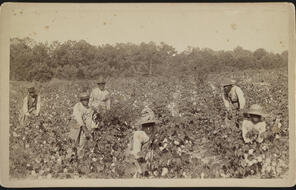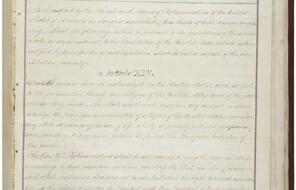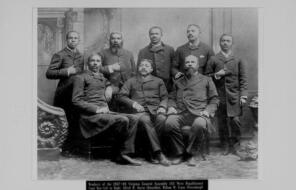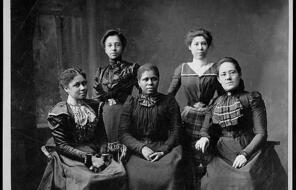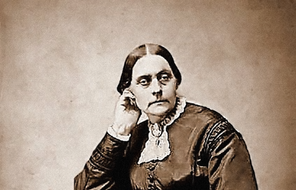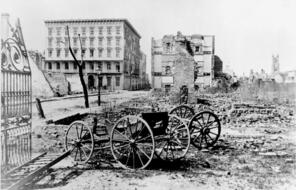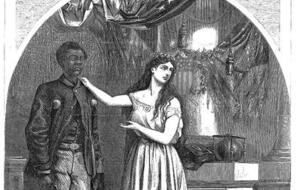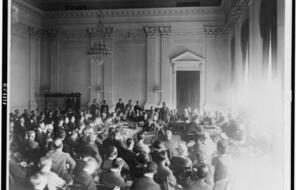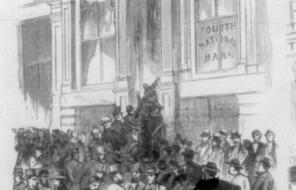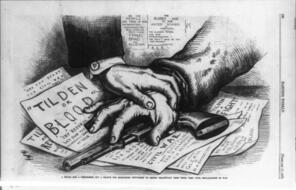Joyce Ladner and Cleveland Sellers on Emmett Till
At a Glance
Subject
- History
- Social Studies
- Racism
Joyce Ladner and Cleveland Sellers on Emmett Till
Joyce Ladner is an activist and sociologist who was active in the Student Nonviolent Coordinating Committee (SNCC), a civil rights organization that operated in the South in the 1960s. Ladner was 12 years old when Emmett Till was killed and an all-white jury failed to convict his murderers. The following is an excerpt from a keynote speech she delivered at the SNCC 40th Anniversary Conference on April 14, 2000, in Raleigh, North Carolina.
Ours was the Emmett Till generation. No other single incident had a more
profound
impact on so many people who came into SNCC. We had seen the JET magazine cover of Emmett Till’s disfigured and bloated face with one eye missing. It was just an awful picture . . . We were his age and could identify with him. I felt that if they had killed a fourteen-year-old, they could also kill me or my brothers. We knew that men were lynched, but we’d never known of a child being lynched before. On a profound, personal level, this reality had a strong,
galvanizing
effect on all of us. The image is with me still. It became etched in my generation’s consciousness.
1
Cleveland Sellers was a civil rights activist born 1944 in Denmark, South Carolina. During the civil rights movement, Sellers helped lead the Student Nonviolent Coordinating Committee (SNCC), a civil rights organization that challenged segregation and held voter registration drives in the South. Sellers was 11 when Emmett Till was murdered and an all-white jury failed to convict his murderers. The following excerpt comes from a 2013 interview conducted by the Library of Congress.
I was devastated by the fact that Emmett could have been me or any other Black kid around that same age. And so, I related to that very quickly. And we had discussions in our class about Emmett Till. I had a cover of the JET, took it to school. Some other students had the same thing. And so, we had rational discussions about it. And, you know, the question comes up: How do you address that? And I think, for us, it was projected out, that that would be our destiny to try to find remedies to a society that would allow that to happen, would condone that, and would actually free those who were responsible for that murder. And I think that that was a way in which we actually got away from revenge and hatred and those kinds of things. We talked about how we were going to use Emmett Till to build on, that we would rectify , in our work and in our effort, the dastardly tragedy that happened to Emmett Till. 2
Reflection Questions
Use both readings to respond to the following question:
- Why did the murder of Emmett Till galvanize a generation of activists to pursue racial justice?
- profoundprofound (adjective):- (of a state, quality, or emotion) very great or intense. Her books offer profound insights into the true nature of courage.
- galvanizinggalvanize (verb): to shock or excite (someone) into taking action. The website has galvanized support for the project.
- 1Joyce Ladner, “Standing Up for Our Beliefs,” in Hands on the Freedom Plow: Personal Accounts by Women in SNCC, ed. Faith S. Holsaert et al. (Champaign: University of Illinois Press, 2012), 226.
- rectifyrectify (verb): to set right, to remedy. Mistakes made now cannot be rectified later.
- dastardlydastardly (adjective): wicked and cruel. They committed some dastardly deeds.
- 2Cleveland, oral history interview conducted by John Dittmer in Denmark, South Carolina, U.S Civil Rights History Project, 2013, https://www.loc.gov/item/2015669180/.


